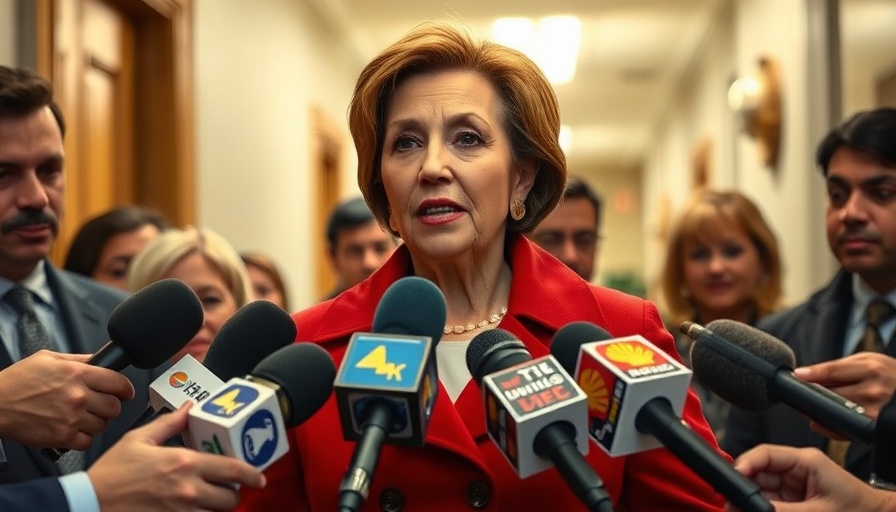
Recognizing the Warning Signs of a Toxic Workplace
Day after day, many individuals find themselves trudging through the paces of their job, often without realizing they might be trapped in a toxic workplace. The pressure of deadlines and daily tasks can obscure signs of an unhealthy work environment. In today's fast-paced job market, it is essential for employees to recognize the red flags that indicate they are in a toxic workplace, risking their mental well-being and productivity. Here are some common warning signs and insights on navigating or exiting such scenarios.
High Employee Turnover: A Major Red Flag
One of the most glaring indicators of a toxic work environment is high employee turnover. When colleagues frequently leave or appear disengaged, it’s a sign of deeper issues within the organization. According to a recent Forbes article, this trend not only disrupts workflow but also stifles team morale, further contributing to a negative culture. Employees may feel their job security is at risk amidst constant changes, making it critical to assess the reasons behind turnover rates.
Poor Communication Can Create Chaos
In many toxic workplaces, communication is not just ineffective; it’s misleading or confusing. Employees may struggle to understand expectations or receive mixed messages, leading to frustration and diminished performance. The Muse highlights that a lack of transparent communication fosters distrust—and without trust, employees are less likely to engage fully at work. It’s vital to ensure that managerial directives are communicated clearly and that there is an open forum for employee feedback.
Excessive Micromanagement: A Control Mechanism
Micromanagement serves as another sign of a fundamental lack of trust within a workplace. When leaders scrutinize every detail of their employees' work, it creates a stifling atmosphere where employees feel undervalued and demoralized. According to insights shared by leadership coach Lisa Quinn, such behavior leads to a “dog-eat-dog” culture where teamwork is hindered by competition rather than collaboration. Employees must feel empowered to do their jobs without constant oversight to foster a healthier workplace.
The Need for Work-Life Balance
In a toxic environment, the lines between work and personal life often blur. Employees may find themselves expected to respond to emails after hours or forgo personal time to complete a project. This lack of respect for work-life boundaries can lead to burnout, as referenced in both articles. Organizations should encourage a balanced approach, allowing employees to recharge and maintain mental health, which ultimately enhances productivity and loyalty.
A Negative Culture is Detrimental
Recurrent gossip, bullying, and favoritism create an environment of dread rather than motivation. This toxic culture incites anxiety and stress levels among employees, which can lead to increased absenteeism and turnover. Recognizing early signs of a negative culture can empower employees to take action—either by addressing concerns constructively or seeking new opportunities elsewhere.
Lack of Growth Opportunities: A Stifling Effect
Without mentorship or avenues for career progression, employees feel like they are stagnating in their positions. Healthy workplaces encourage growth and development, offering pathways for skill enhancement and role advancement. The absence of these opportunities not only demotivates staff but also contributes to a stagnant organizational culture.
Practical Steps and Insights to Navigate Toxicity
Recognizing these signs is the first step, but what comes next? Here are some actionable insights:
- Identify Toxic Behaviors: Understanding the specific toxic traits present in your workplace is crucial. Keeping a journal of your experiences can help clarify patterns of negativity.
- Communicate Openly: If you feel comfortable, reach out to supervisors or HR with constructive feedback about your work environment.
- Consider Your Options: If toxicity persists, evaluate your career options. Seek environments that prioritize employee wellbeing, as reported frequently post-pandemic.
- Seek Support: Talk to trusted colleagues or mentors who can provide guidance and understanding during difficult times.
- Plan for Change: Equip yourself to seek a healthier work environment by enhancing your resume and networking.
The Path to Psychological Safety
In conclusion, it’s evident that the demand for psychological safety is reshaping workplace culture. Employees are more aware now than ever of their rights and wellbeing. If any of these signs seem familiar, take time to assess your situation. The corporate landscape continues to evolve, fostering transparency and inclusivity, making it essential for workers to prioritize their mental health over toxic environments.
To learn more about fostering healthy workplace practices, consider exploring professional growth opportunities or checking in with career resources available to navigate these changes.
 Add Row
Add Row  Add
Add 




Write A Comment